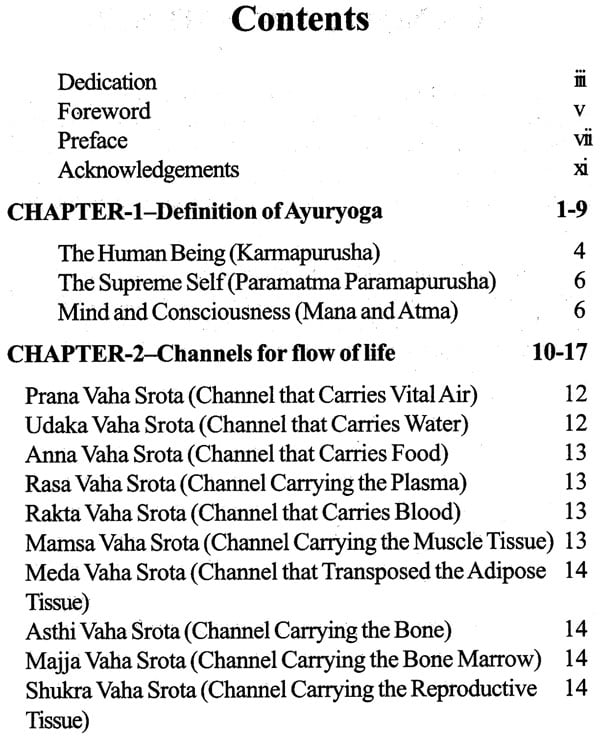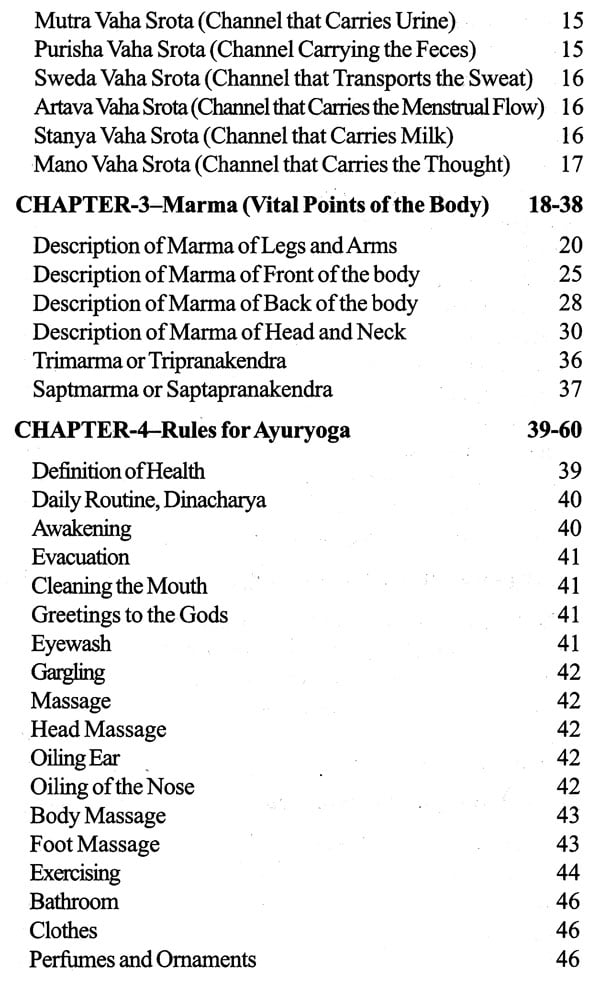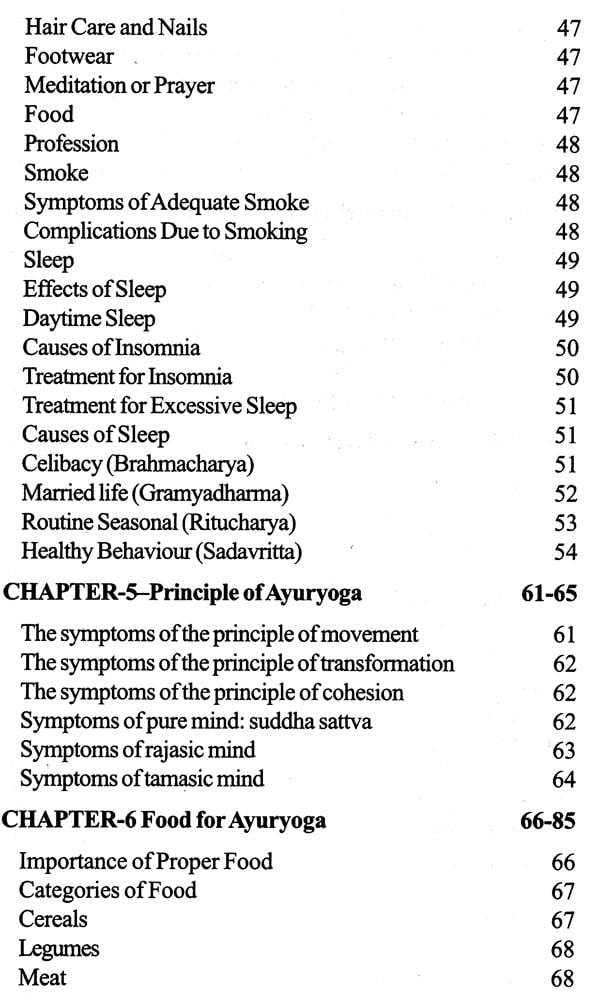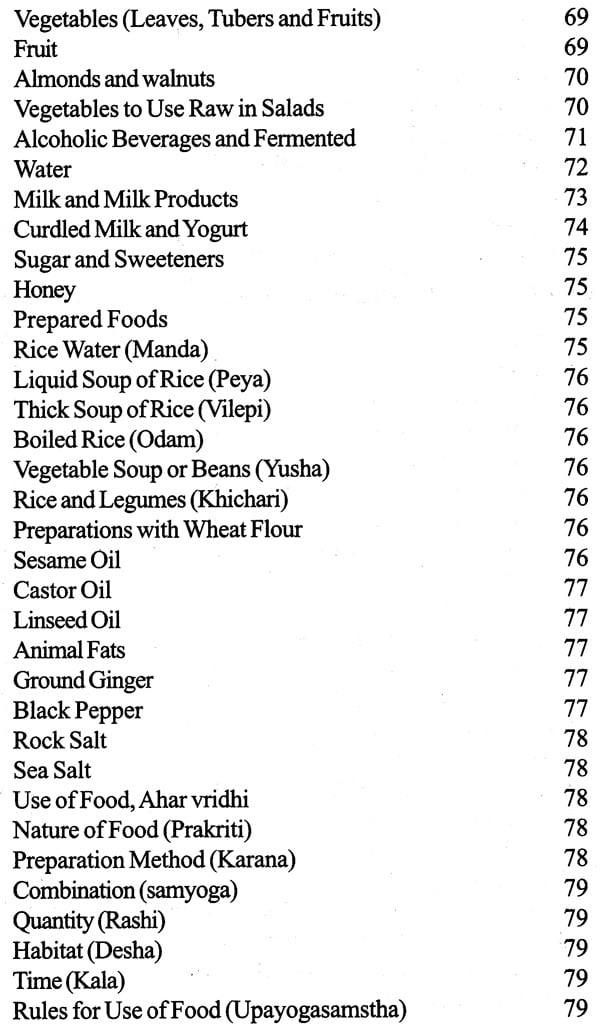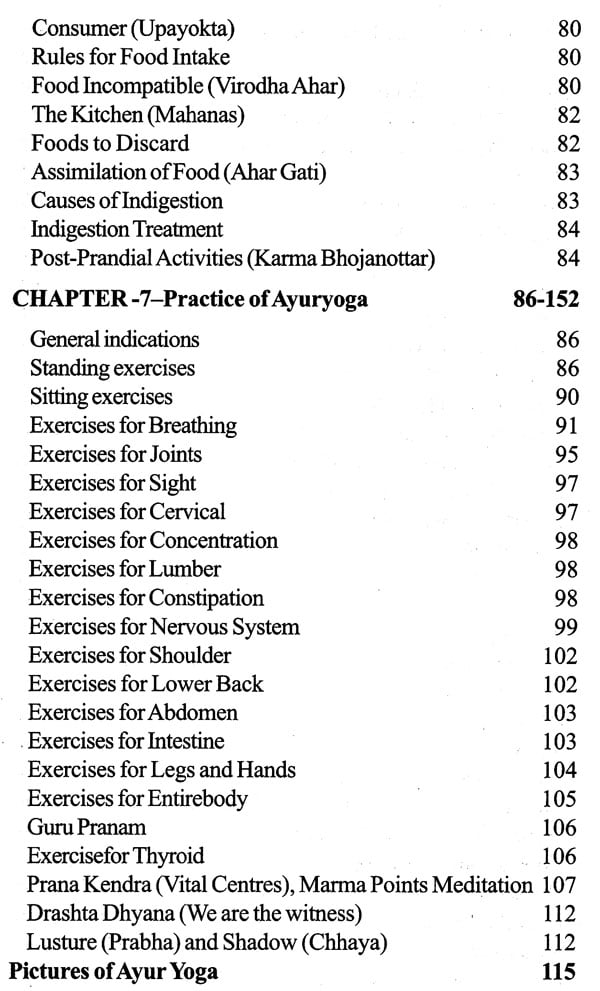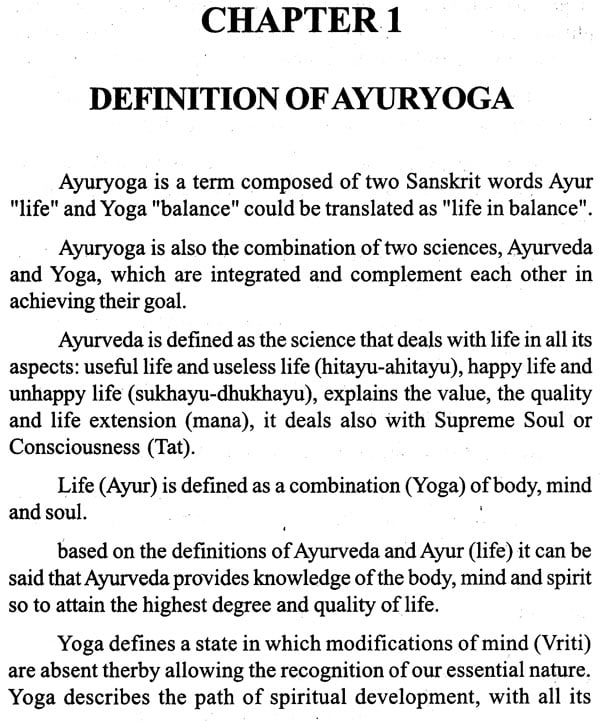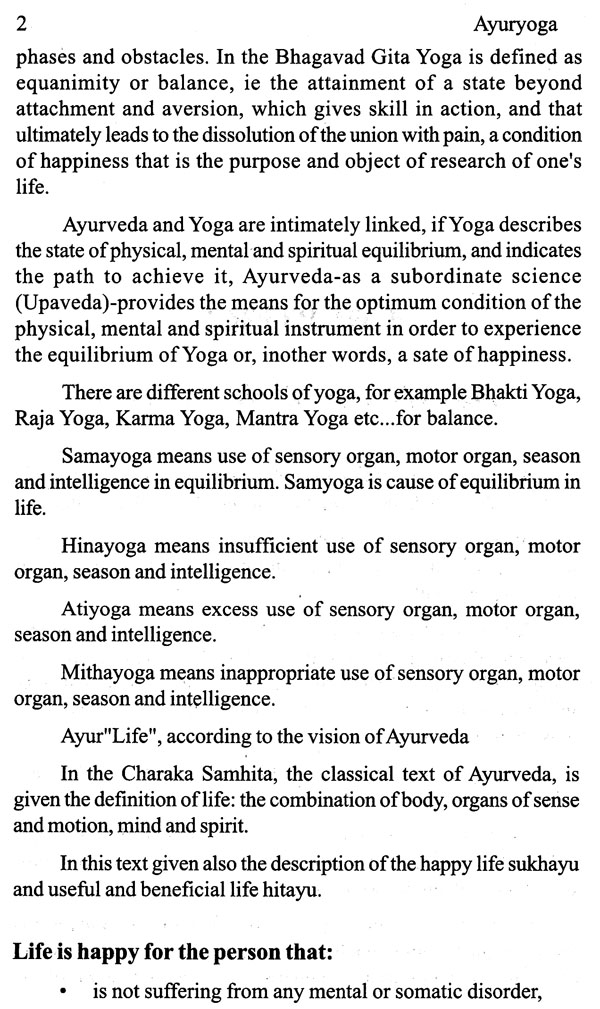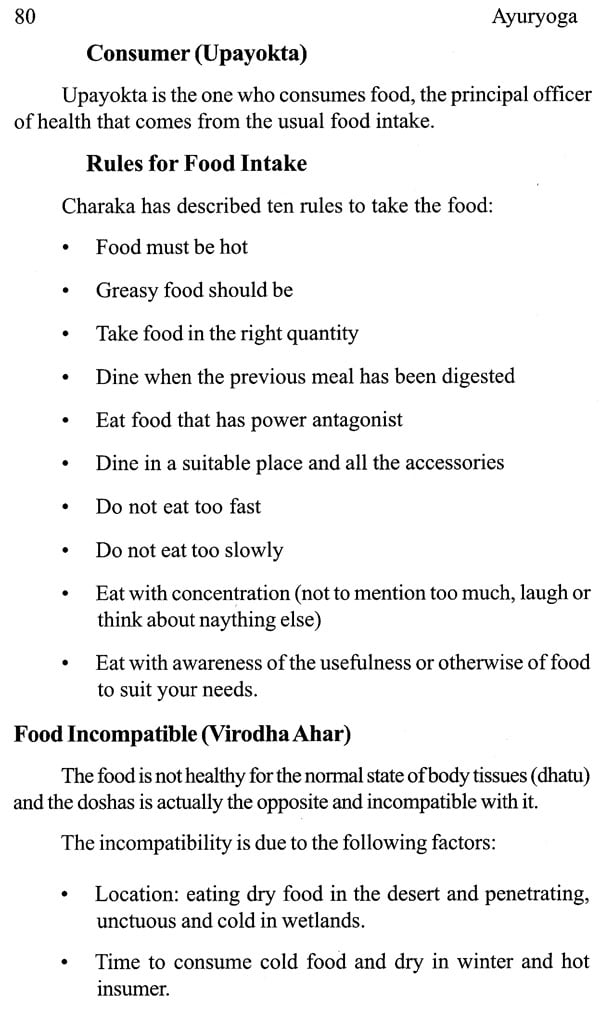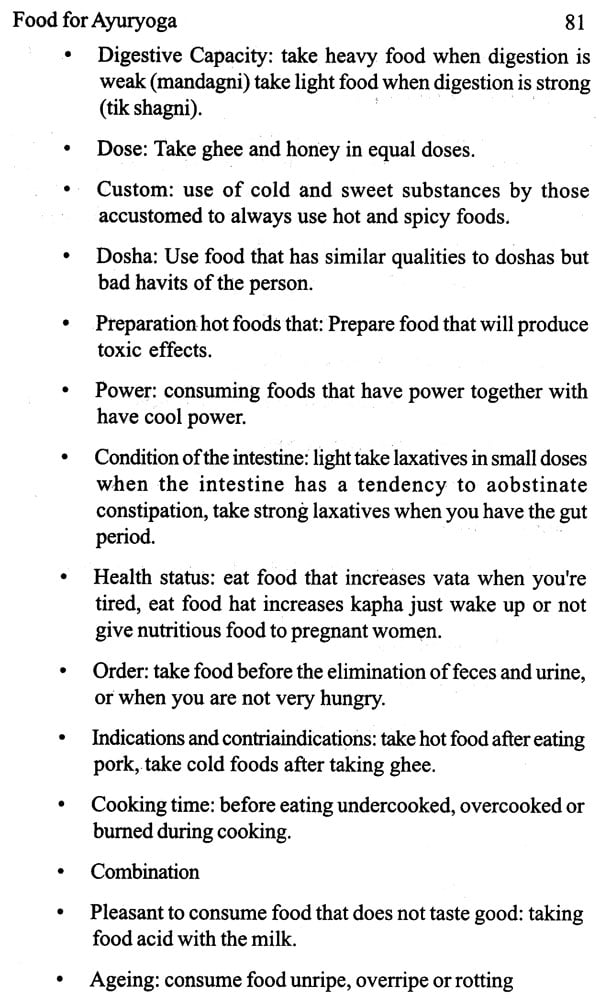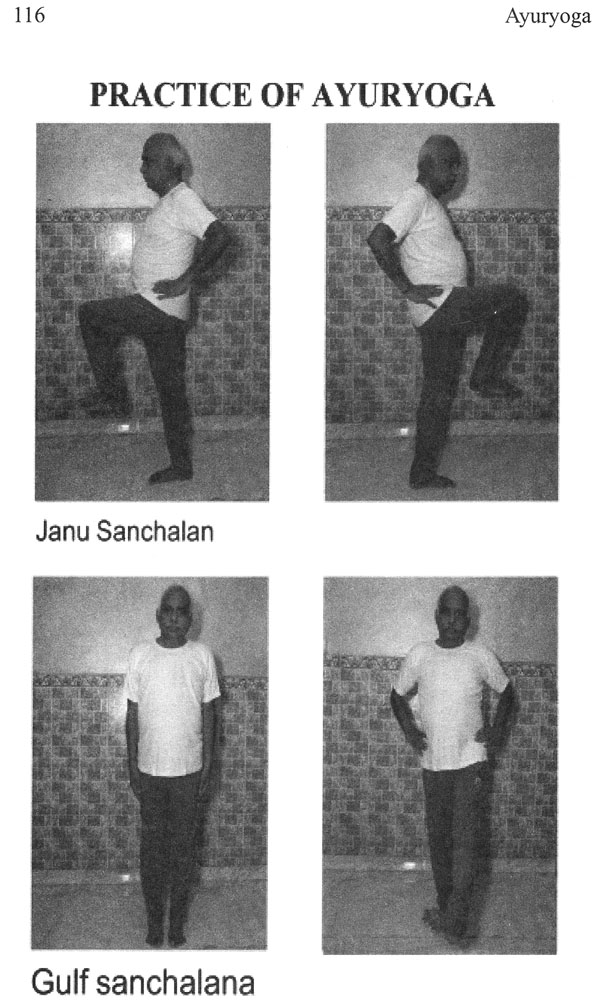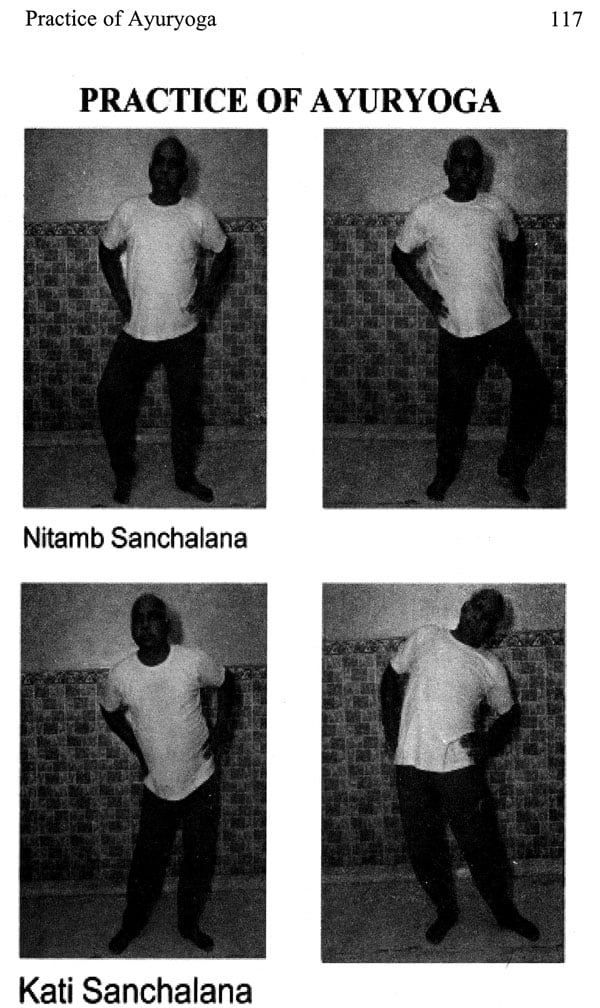
Ayuryoga (Life in Equilibrium)
Book Specification
| Item Code: | NAV218 |
| Author: | Dr. Swami Nath Mishra |
| Publisher: | CHAUKHAMBHA ORIENTALIA, Delhi |
| Language: | English |
| Edition: | 2019 |
| Pages: | 168 |
| Cover: | PAPERBACK |
| Other Details | 8.50 X 5.50 inch |
| Weight | 160 gm |
Book Description
This book provides simple and practical method to obtain the equilibrium in the life. It is an unique book which can help the person to practice Ayuryoga and he will achieve the state of happiness, health and equilibrium in life. In this book Srota, Marma, Food, Rules, Principles and practice of Ayuryoga are described in 7 chapters. Practicing-Ayuryoga pictures are given to make text more clear.
I am feeling very happy to write foreword of the book named "Ayuryoga, Life in Equilibrium" written by Dr Swami Nath Mishra PhD Ayurveda, Director, School ofAyurveda, Holistic School Ananad Ashram, Italy. This book has been composed in seven chapters. In the first chapter definition of Ayuryoga, supreme self, mind, consciousness and five basic elements are being described. Channels for the flow of life are incorporated in second and vital points of the body which are the base of Ayuryoga in third chapter. In the forth chapter rules for Ayuryoga, definition of health, daily routine, sleep and seasonal routine and good conduct are being discussed. In the fifth chapter principle of Ayuryoga and satvik, rajsik and tamsik mind are explained.
To obtain the equilibrium in the life, method is required. This method is described in ayuryoga. The most simple and practical method is going from gross to subtle. According to Charak Samhita, one should bring in equilibrium first body with senses. First motor organs: speaking organs, organs of locomotion, holding, elimination, reproduction. Then he should balance the five sensory organs: smell organs (nose), taste (tongue), hearing (ears), vision (eyes), touch (skin). Then mind: organ of thinking. Then consciousness: atman (more subtle). Body is the frame and the seat of sense and motor organs, mind and atman (consciousness). First of all, to balance the body, one should give attention to the diet and physical exercise. The base of the body are srota, channels in our body, and the vital center. To make the flow of the channels in equilibrium, in ayuryoga, we concentrate on the diet and physical exercise.
Then we go ahead to control the mind, in order to get stability in the mind, that is called Chitta (stable mind). By the practice of ayuryogic breathing and ayuryogic meditation on the marma points and the color of the body (aura). This meditation helps to overcome body attachment. Phases of spiritual development in ayuryoga.
• person who are suffering with the VISHADA (pain, sadness coming from desire, infatuation, anger, greediness, jealousy and violence, all characteristics we are born with) need first to realize they're suffering from this. vairaghya: lack of desire for material things, it provokes stress and strain in the mind and one loses interest in the material world
. Abhyasa: he looks for guidance to some learned people (guru), he develops devotion to the guide, dedication and surrender.
• Tapa: he is guided by ayuryoga to do the tap, the practice ready to face the problem. Whith tapa, samskara are reduced.
Swadhyaya: individual path, he should understand which spiritual practice suit him the best with the help of the guru.
Astic: he must believe he will be successful in the life, full dedication to the god, guru and text. Sadvritta Practice of good conduct, he must follow the rules of daily routines of ayuryoga and must be positive. He should conceive himself as part of the universe and love and service to every living beings, consider all universe as a family so he can get ability to overcome the obstacles in the development of spiritual life (desire, infatuation, anger, greediness, jealousy.
**Contents and Sample Pages**
